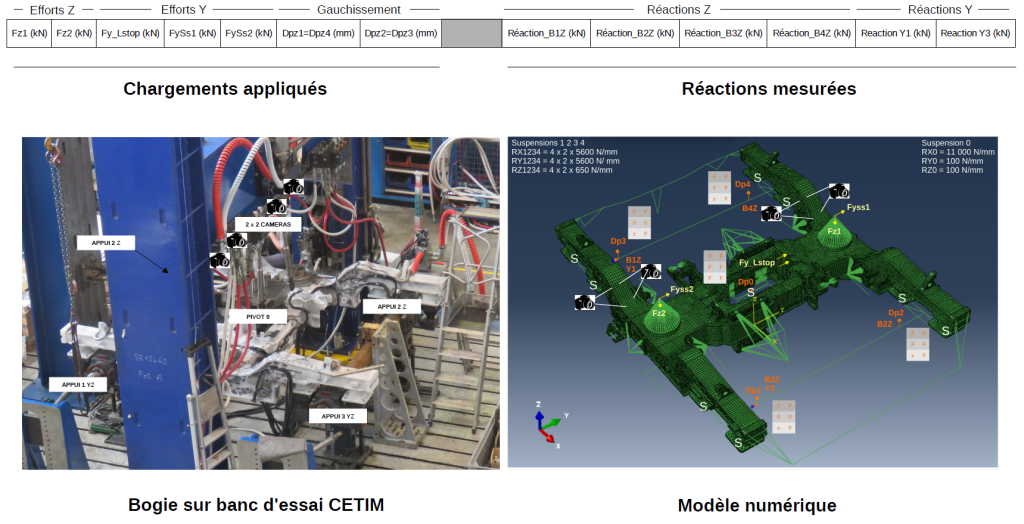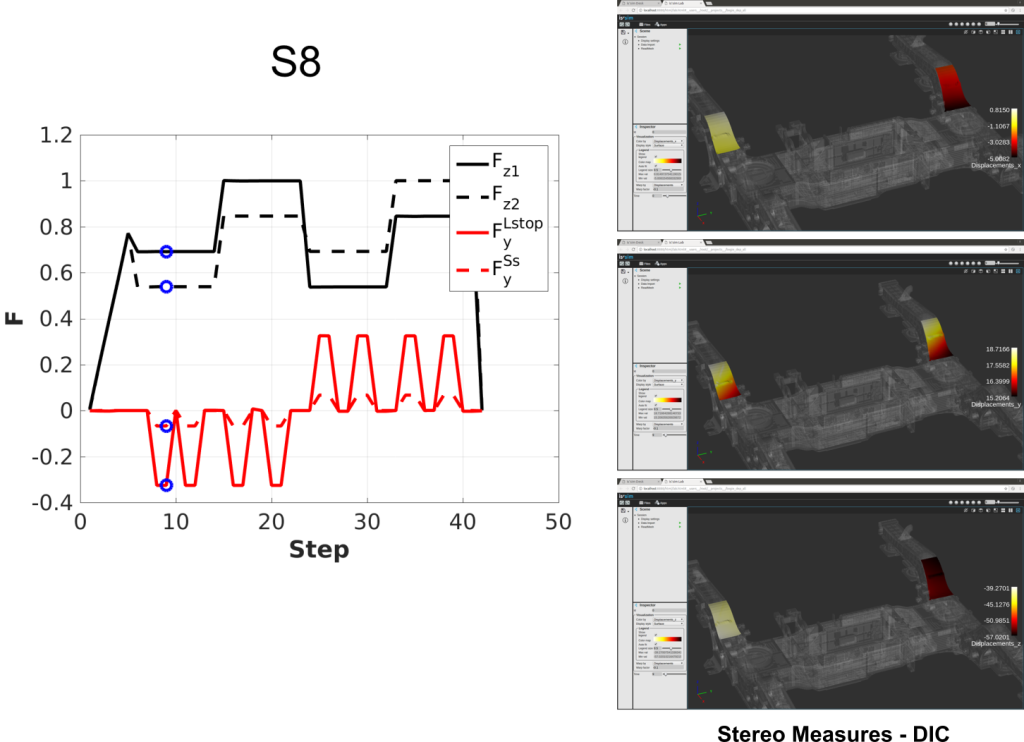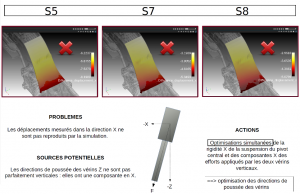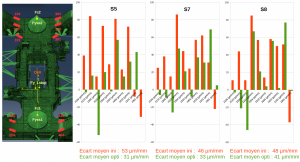Towards a better understanding of mechanicals tests thanks to DIC, with ALSTOM and CETIM
Consistency of simulation and test data
The consistency of test data and numerical results is paramount while carrying out the simulation-experiment comparison required to validate numerical simulations. First of all, mechanical tests need to respect the specifications laid out during their design: sample geometry, load path, location and orientation of the loading point, measurement points etc. This sometimes necessitates complex test setups, simply to generate and enforce the correct application of force and displacement boundary conditions, both in terms of amplitude and direction. Often, uncertainties associated with machine calibration and sample positioning in the test rig do not allow to stay within the indicated tolerances. The quality of the comparison is often limited as a result.
In order to make sure that the compared data is consistent, it is necessary to monitor the tests carefully and to update the model accordingly, by taking into account occasional discrepancies directly in the simulation. To this end, digital image correlation is an essential tool because it brings rich kinematic measurement to the test engineer. In addition, the technique is contactless, which makes it very unobtrusive.
Structural tests on a train bogie
Let’s consider the case of a test carried out on a railway bogie in collaboration with ALSTOM and CETIM. Vertical (Fz1 et Fz2) and lateral (Fyss1 et Fyss2) forces are applied on the platform, a lateral force is applied (Fy_Lstop) near the bogie center and warping displacements (Dpz1, Dpz2, Dpz3, Dpz4) are applied near the suspensions. Strain gauges are disposed over the structure, as well as reaction load sensors and two DIC systems are used to record the displacement on the bogie’s gooseneck.

The numerical model is complex, and the test instrumentation even more so. Force and displacement measurements are gathered and plotted for a range of loading cases. Following these tests, we were able to gather a large amount of experimental data which we can now compare to the simulation.

The first question we should ask is whether the loads and displacements that were actually enforced during the test match the specifications established prior to testing, so that we can ensure that the test-simulation comparison will be relevant. Given the test complexity and the flexible links constituted by the suspensions, how far can we trust that the applied force direction was actually vertical?
Taking experimental boundary conditions into account in the simulation
We can use the large amount of image data acquired during the test in order to determine the direction of the force boundary conditions during loading by iteratively comparing simulation and test results until the two match.

If we consider the simulation results obtained before updating the boundary conditions, the simulated displacement fields significantly differ with the measured ones. The identification of the force application direction is then carried simultaneously for three loading cases : S5, S7 et S8.

Upon completion of the optimization procedure, the angles of the hydraulic actuators are obtained, and match the orientation recorded during the test. The simulation has been updated to take additional experimental information into account, and the simulation is then brought much closer to the real-world events.

Advantages of a better description of mechanical tests in the simulation
The results obtained with this method were validated using the strain measurement obtained from the strain gauges that were planted on the bogie. The comparison of the gaps in strain levels before and after enforcement of experimental boundary conditions shows a strong diminution of this gap for the updated model. On average, the proposed method was able to achieve a 30% diminution of the strain gap between experiment and simulation.

Fulll-field measurements are great tool to guide the simulation engineer towards a better understanding of actual experimental conditions, and thus make it possible to introduce additional experimental information in the simulation for it to match reality ever more closely.


